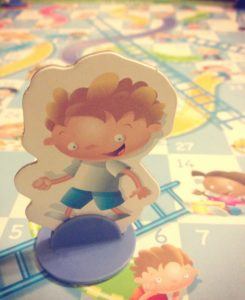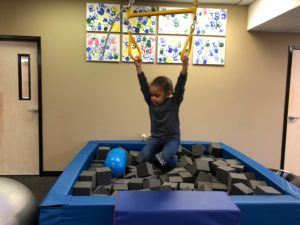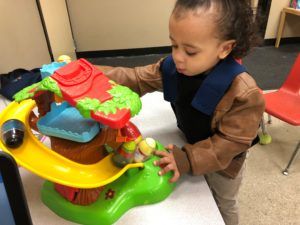Blog
Look what I can do!
At 0-3 months old, I will be able to start holding my head up when placed on my tummy. At first, I will be looking straight down, but with practice, I will be able to lift it even higher. Make sure my arms are under me so I learn to push up.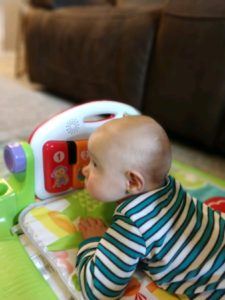
At 3-6 months old, I will be able to push up more through my arms so I can really look around. I will be able to reach for toys and bring them to my mouth. Make sure I have plenty of toys!
At 6-9 months old I will start to move around while on my tummy. I will pivot and I may learn to move backwards before I am strong enough to move forward. I love to explore!
At 9-12 months old I will be strong enough to push up onto my hands and knees for crawling. Watch out, world! Here I come!
Tummy time should always be supervised and done when your child is awake.
Tummy time should be done when your baby is happy – not tired or hungry.
Tummy time should not be done right after your baby has eaten. This can put pressure on a full tummy and cause your baby to spit up.
Perform tummy time for short intervals (10 minutes), several times per day.
Use a nursing pillow or small towel roll under the arms. This takes some of the weight off of the arms, making it easier to lift his head.
Use toys and music to make it fun.
Get on the floor so your baby can look at you.
Hold your baby on your chest, facing you, and recline back so you are face to face.
Babies loves to hear your voice and see your face!
When and how much?
Tummy time is needed every day and should begin the first day you bring your infant home from the hospital.
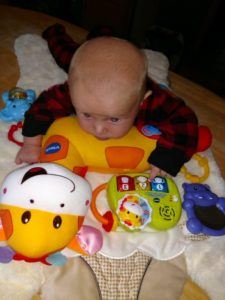 Start with just a few minutes at a time, several times per day. Gradually build up, as your baby is able to tolerate more.
Start with just a few minutes at a time, several times per day. Gradually build up, as your baby is able to tolerate more.
Why tummy time?
Tummy time helps your baby get stronger in order to develop his skills.
Tummy time is needed to promote motor skills such as sitting up and crawling.
It strengthens the hands for holding onto toys or a bottle and helps to develop vision.
Babies who do not spend time on their tummy are more likely to have delays in their motor skills.
What if my baby doesn’t like it?
Hang in there and keep trying! With practice and toys to make it fun, your child will learn to enjoy it.
Keep that perfectly shaped head
Babies who are placed too much in swings, car seats and on their backs and not enough on their tummy can end up having a misshapen head.
Putting your baby on his tummy several times throughout the day keeps pressure off of the back of the head and keeps that perfectly round little head.
Avoid having your baby sleep in a swing or car seat, if you can. Babies should be placed on their backs to sleep on a flat surface. The flat surface allows your baby to turn his head to either side, helping to form the perfect head shape.
Tummy time should be fun and provide learning opportunities.
Remember to place your child on their back to sleep.
If you have questions about your child’s development, visit https://www.abcpediatrictherapy.com. We love to help!
Read MoreThere are many reasons why a child may benefit from orthotic intervention at all different ages, with and without a medical diagnosis. The use of orthotics can vary from child to child, however, the main goal is to provide stability while promoting functional ability.
Orthotics can range from shoe inserts to knee high braces and more. They can be used to assist with flat feet, toe walking, weakness, poor balance, frequent tripping, leg length discrepancies, and etc. Orthotics are made to improve a child’s walking pattern to as normal for THEM as possible to facilitate age appropriate child development.
As a physical therapist, I hear more often than not that “my child’s doctor said they would grow out of it.” This may be the case for some children, but not all children are the same. Our posture and the way we walk begin in the womb and continue to develop through infancy and beyond. The way we walk is affected by our strength, flexibility, endurance, sensory processing, balance, and more. We cannot assume that because one child grew out of toe walking, all children will. There are many factors to consider and assess with each and every individual child.
The photos below are of a child whose mom had concerns about her foot position as soon as she began walking. Her primary care provider told her that she would grow out of it. She is now 9 years old and has significant ankle pain with running, jumping and long distant walking. With the use of custom orthotics and physical therapy services her pain has improved significantly. She will occasionally still have pain with higher impact sports, however, it is less frequent and she is now able to enjoy playing with her friends.
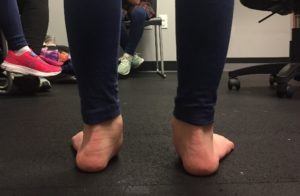
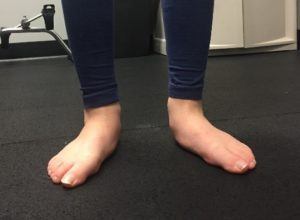
A child’s medial column of their foot, which means the middle of their foot (arch), does not fully develop until the age of 7-8 years old. This means that the forces we place upon our feet during this time frame will significantly impact the structure of them. If a child is compensating in the way they are standing, walking, running it could lead to foot abnormalities when they get older which could potentially lead to pain and/or decreased function in their day to day lives.
It is also important to note that because orthotics promote function, if a child is having difficulty learning to walk, jump, run, hop, or any gross motor activity that orthotics could be beneficial in helping facilitate those motor milestones.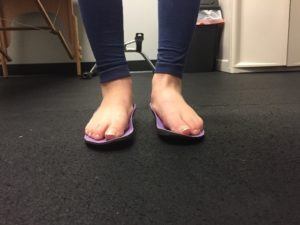
If you have concerns about your child’s foot position, posture, walking, and/gross motor development I highly recommend consulting with your pediatrician, as well as, a physical therapist to make sure that there are not underlying deficits and to determine if 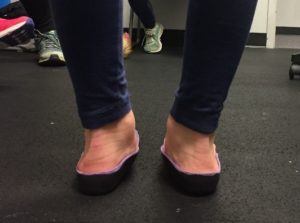 your child would benefit from orthotic intervention. There is not one specific type of orthotic for any given diagnosis or deficit. There are so many options of orthotics available and a good physical therapist will help you determine what is best for your child.
your child would benefit from orthotic intervention. There is not one specific type of orthotic for any given diagnosis or deficit. There are so many options of orthotics available and a good physical therapist will help you determine what is best for your child.
For more information on child development and therapy services visit: https://www.abcpediatrictherapy.com/
Written by: Sandra Koopmans PT, DPT
Read MoreFor a child, getting themselves dressed is a big accomplishment and can boost their self-esteem. There are many skills that are needed to get dressed including fine and gross motor skills, bilateral integration (the ability to use both sides of your body together with coordination), sequencing (putting skills together to achieve a final task), strength, motor planning (the ability to determine and carry out a series of motor actions), and sensory processing.
Children can begin assisting with dressing before their first birthday and gain independence in the upcoming years before being able to fully dress themselves at age 5.
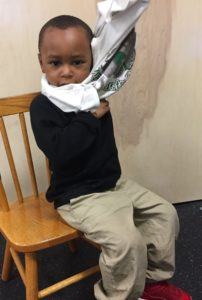
What dressing skills should my child be able to do and at what age? The answers are below. Encourage the skill prior to the age it should be mastered. At first you will have to completely do the skill for your child. Talk to your child telling them all the steps to complete the skills. Progressively ask your child to help you with each step. Praise your child for their help with the task and successful completion. You will be teaching your child pride, sense of accomplishment and trust that you think they can. Great job parent!
By the time a child is 1 years old:
Your child should be able to take his shoes and socks off.
He/she should push their arms in sleeves once the shirt is placed over their head.
A 1 year old should push legs into pants when the pants are held for them.
By the time a child is 2 years old:
He/she should be able to help pull pants down.
A 2 year old should remove their own jacket.
By the time a child is 3 years old:
A 3 year old should be able to take off pants.
He/she can button and unbutton large buttons.
Your child will unzip and zip jacket once zipper is started.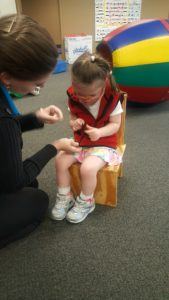
Three year old’s put on socks and shoes by themselves.
By the time a child is 4 years old:
He/she should be able to put on shirt and pants independently.
A 4 year old can take off his/her own shirt.
At this age, your child can snap, button, zip, and buckle a belt.
Putting socks on correctly is a skill at age 4.
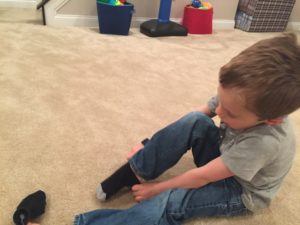
By the time a child is 5 years old:
Your child should be able to dress and undress himself including all fasteners and tie his shoes! You now have extra time for you!!
Continue to challenge your child now that you know what skills they should be doing and when. Push their potential to be independent. Praise their successes!
This is the way to raise a happy, confident child!!
If you need help teaching your child skills reach out to ABC Pediatric Therapy Network. We are here for you! If you have questions, call us or visit our website at https://www.abcpediatrictherapy.com.
Read More
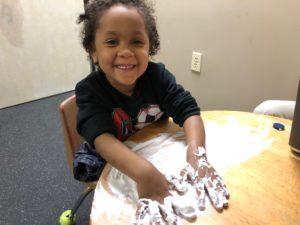
Winter time can be difficult for kids and parents, especially kids with higher sensory needs. Being stuck inside more means less time outside and fewer options for movement activities. Here are some ideas to get your kids moving and to keep them busy during those long winter months:
– Check out your local library for different classes they have – they often have story time and other free programs
– Many fast food restaurants or indoor malls can have play areas where they can climb and slide
– Stores that sell playground equipment will often have the option to play on equipment indoors for a small cost
– Children’s museums or other museums – some of them have a cost and others are free to the public
– Cooking or craft classes
– Indoor play cafes
– Nature centers
-Play in the snow!

– At home:
o Make an indoor obstacle course
o Science experiments
o Make homemade playdough
o Indoor snowball fight using wool dryer balls or rolled up socks
o Rice and bean bins
o Shaving cream, kinetic sand, play dough, putty activities
o Indoor scavenger hunt
o Create structures using marshmallows and toothpicks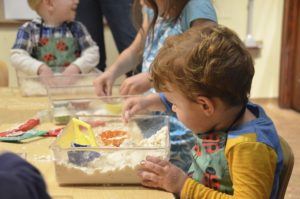
o Build a cardboard house
Continue to challenge your child’s development everyday. If you have any concerns, visit our website https://www.abcpediatrictherapy.com or give us a call. We are happy to help!
Read MoreABC Pediatric Therapy Network is always about progress! If you are receiving services somewhere other than ABC Pediatric Therapy Network and your child is achieving success, DO NOT change a thing. That is what ABC is all about …. SUCCESS! We want your child to be consistently showing progress. We, like you, want your child to reach their maximum potential.
View this post on Instagram
Testimonial Tuesday! Tell us something great about your child’s therapist!

If your child is not achieving success….at school, home therapy, outpatient therapy…. ask more questions. Ask what the goals are and why your child is not achieving them. Maybe modify the goals or the strategies to achieve them. Is your team on board to create change that is responsive to your child’s needs?! Let’s hope so!
Perhaps now is time for a change.
If you are receiving therapy at school, call an IEP meeting to discuss strategies. You might be able to increase the minutes your child is seen. Maybe you just need to modify the approach to the goal. You could change the location where the goal is being worked on – if in the classroom, try a private room. Maybe your child is being seen in a group and one on one would be better. Perhaps the stairs in the school are not motivating but the stairs to the playground are.
Add additional outpatient therapy to increase the intensity to reach goals. Having another perspective from another therapist can be beneficial. Private therapy is usually individual and this increased intensity might be just what your child needs.
Is summer approaching? What is your plan to push potential during the summer?
Are you at an outpatient facility and your child needs a change? Each outpatient therapy office has a different approach to treatment. Take a tour at another facility to see what best meets your child’s needs.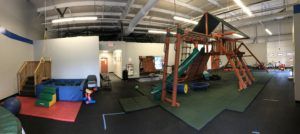
Therapy…success…change…progress – is all about communication. Your therapy team needs to listen to your and your child’s wants/ needs and modify the plan of care constantly to be responsive to you and your child. If you have found that…great! Celebrate the small victories and push for the big wins! If you have not found that, do not stop advocating for your child. You are often their voice as well as their cheerleader!
*Find the therapy approach – outpatient, school, one on one or group – that succeeds in ensuring your child progresses.
*Increase communication – update or change goals to accomplish more developmental milestones.
*Increase frequency – attend therapy more often or add outpatient to school therapy.
Whatever you do, do not stop trying something new or something different than what you are doing now until you see the progress you want for your child.
You know your child best. Achieving developmental milestones increases self esteem in your child. Feeling like you can do the same tasks as your friends creates a sense of acceptance and achievement.
Empower and educate yourself at www.abcpediatrictherapy.com. Reach out to ABC if we can help you in any way!
Read More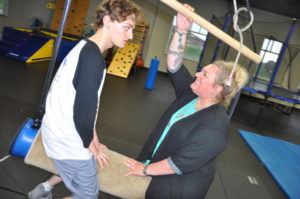 When Jakob was little and the diagnosis was new, the fear was so great that the anxiety, depression and the mere fight to survive was overwhelming. There was love there, so much love, it just felt so out of reach from the pain and suffering of the moment. Thankfully, time changes things. The distance from the most stressful of days has gifted me with clarity. In that clarity, I have found so much beauty. I am now so grateful for the special brand of love Jakob’s autism has brought into my life.
When Jakob was little and the diagnosis was new, the fear was so great that the anxiety, depression and the mere fight to survive was overwhelming. There was love there, so much love, it just felt so out of reach from the pain and suffering of the moment. Thankfully, time changes things. The distance from the most stressful of days has gifted me with clarity. In that clarity, I have found so much beauty. I am now so grateful for the special brand of love Jakob’s autism has brought into my life.
I have a 17-year-old son who will on a regular basis walk beside me and hold my hand through Kroger. Standing at the checkout, he’ll lovingly rest his head on my shoulder. How many typical 17-year-olds do that? Since I never know which time may be his last, I always soak it in, never taking his sweet and tender gesture for granted.
During just normal conversation, he will stand in front of me, look me in the eye, grab both my hands and smile at me. Sometimes he’s talking about stuff that’s a big deal like having to go to study hall. But most often it’s about the simple stuff, like having waffles for dinner. The love in his eyes and the desire to connect melts my heart every time.
We have our own language. We can communicate with each other clearly and concisely while others watch and listen and have no clue what’s going on. He knows that I will always listen and if I don’t understand what he’s trying to tell me, he knows I will keep trying until I figure it out. I love being his safe place and the person he can always talk to about anything.
Recently, he accidentally shaved off his sideburns and that was the funniest thing that happened the entire day. I showed him where hair is supposed to grow on his face and where he needs to stop the razor. It turned into a laughfest that included pictures and texts to family and friends saying “I shaved off my sideburns. Whoopsies”. There’s so much joy in the silly little things.
I think we’ve both learned that everything is little and it’s all silly. Laughter lives large in our home. Being able to laugh at everything has proven to be the best medicine for a kid who struggles to figure out how the world most people live in works and a mom who so desperately wants to help him do that.
Yes, he has taught me patience, compassion, tolerance, kindness, acceptance, perseverance. He has also shown me how to bravely be who I am. This he does by example every day. I have a child who will not conform to what society thinks he should be. How he should think and see and talk and act and be. Jakob is Jakob and he will dig his heels in and fight anyone who forcibly tries to make him be something he’s not. That takes courage and conviction. An incredible example for us all.
Jakob is such a blessing. Every day. He’s my best friend, my teacher, my buddy, my favorite Friday night date, my co-pilot, my navigator, my partner in crime, my joy, my heart, my soulmate, my son. We couldn’t be any more perfect than that.
Read MoreThe ABC Interactive Screening Tool was developed to empower the parent. We want parents to know what to challenge and when. We do not want your child arriving at preschool or kindergarten not being able to cut, put on their coat or eat the snack provided. What can you, as a parent, do to ensure your child is reaching their potential? The answer…. get educated. We want to help! First, click below to fill out the online screening tool.
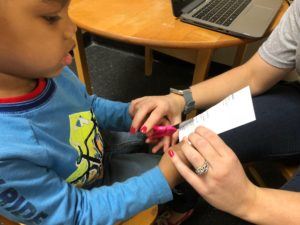
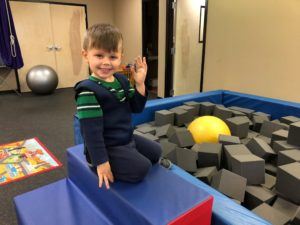
Ok, you have filled out the tool. Now what?!?
The tool was designed to be a quick look at how your child is doing. A chance for you to take a look for yourself. Try age appropriate skills with your child to really see for yourself how they are doing.
It is important to understand that this was just a glimpse. A full evaluation of skills at each age level would look at 50 or more skills where this tool only looks at 7- 10 skills for gross motor, fine motor and speech/language skills.
If your child misses 2 or more skills in any one area, we recommend an evaluation of those skills by a licensed therapist. Why? A therapist will be able to teach you what to encourage at home and how. Therapy may or may not be recommended for your child. A therapist wants to ensure that each child reaches age appropriate milestones in a timely manner.
If your child misses 2 or more skills when we are assessing 7-10 skills in the Interactive Screening Tool, we expect that they might miss significantly more when assessing 50 skills in a formal evaluation!
What could happen if my child is behind on skills?
Compensatory patterns could develop if your child is not achieving milestones. Your child may try to figure out how to achieve a skill even though muscle weakness exists. This may lead to the development of bad patterns that will affect future skills. For example, speed and agility for sports may be affected if a child does not develop higher level balance skills like 1 foot standing or walking on a balance beam. A child that does not spend time on his belly may show signs of weakness in his trunk or arms effecting handwriting or scissor cutting later. Children that do not like to climb on jungle gyms or swing on swings might find that riding a 2-wheeler is challenging in the future. This could affect social skills and friends as their friends will take off on their 2 wheeled bikes leaving your child behind to find a more sedentary activity to play.
Why does it matter if my child achieves skills on time?
As a parent, we want our children to succeed at their fullest potential. If our child like Legos or playing the trombone or playing football, all are great. We do not want them to be limited by their motor skills in their choices of what they choose to do or who their friends are. We want them to be able to decide based on their interests not their lack of ability.
For example, if your child chooses not to play sports. That is fine. As a parent, we just do not want him/her not to choose sports due to poor balance or strength.
If your child chooses not to be an artist, we do not want that choice influenced by weak hand/arm muscles. But just that your child prefers something else.
Our job as a parent is to challenge our child at their fullest potential and encourage them to make choices based on their interests.
So get educated. Know what your child needs to know how to do and when. That way you will have the right toys in your house. You will know when to get out the messy glue and paint. You will know when to supervise the scissor cutting. You will know when to leave extra time to “make“ your child tie his/her own shoes or even to be sure they are wearing tie shoes.
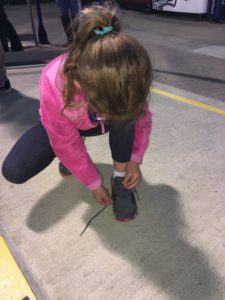
Good job parent! You are now educated on what your child should do and when.
Now, pay it forward!
Who else in your world wants to be an informed parent that can empower their child to reach their fullest potential!?! Share this link with them [email protected]!
Let’s change the lives of children together!
You will find answers to many of your developmental questions at https://www.abcpediatrictherapy.com
Read More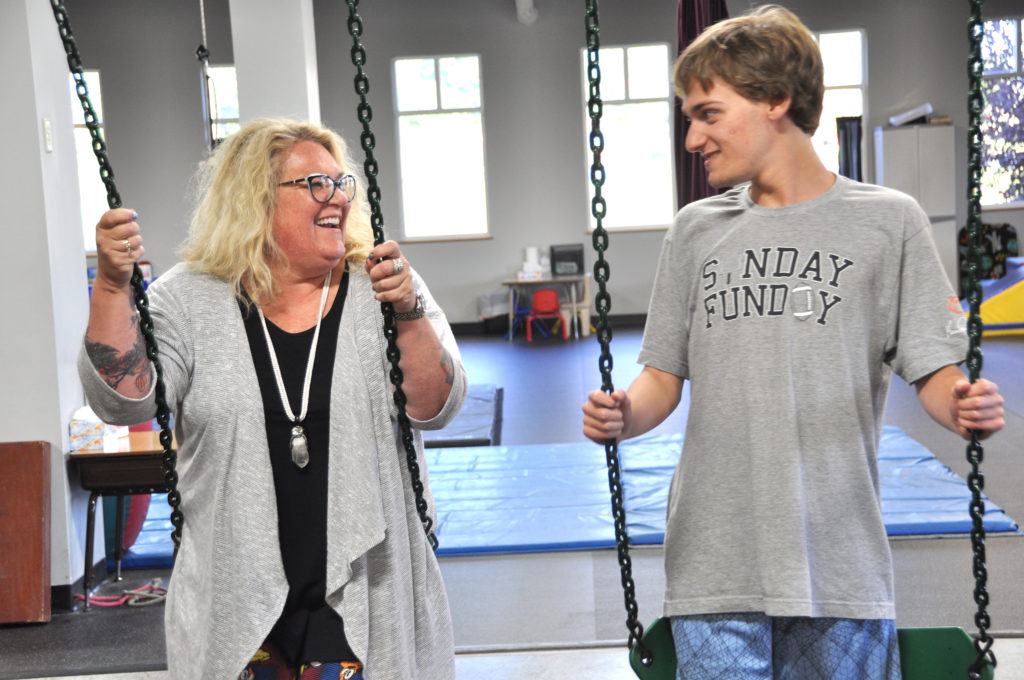 At Jakob’s first IEP meeting when he was three, his teacher asked me what goals I had for him. I had no clue. I mean I knew I wanted him to be better. To be happier. To act more like other kids his age, you know, the “normal” ones. Seeing the end results I wanted was easy. Creating a plan for how to get there was not. In that initial meeting while I sat in a chair made for a toddler, the only goal I could come up with was “drink out of a cup.”
At Jakob’s first IEP meeting when he was three, his teacher asked me what goals I had for him. I had no clue. I mean I knew I wanted him to be better. To be happier. To act more like other kids his age, you know, the “normal” ones. Seeing the end results I wanted was easy. Creating a plan for how to get there was not. In that initial meeting while I sat in a chair made for a toddler, the only goal I could come up with was “drink out of a cup.”
After fourteen years of practice and lots of work to understand, it’s easier. I can look at Jakob and see where he is and where I’d love to see him go next. A lot of the time, I even know what we can do to help get him there. Back then the process was frustrating and scary, now it’s exciting and fun.
The biggest struggle for me in the beginning was coming to the realization that accepting where he was didn’t mean that I believed he wasn’t capable of doing or being more. Acceptance doesn’t mean losing faith or giving up hope. It means seeing without judgment what is right in front of me. And the only way to make a plan for where I wanted us to go was to really understand where we were. Once I got a good handle on that, we were ready to proceed.
The other big shift in my thinking had to do with expectations and attaching to outcomes. After learning to accept that Jakob was right where he was with communication and eye contact and flexibility and behaviors, I also had to accept that nothing may ever change. Where he was in each of those moments that he didn’t seem to notice I was in the same room or when he would scream and cry for reasons that weren’t apparent to me, may be exactly where he was going to stay forever. I had no way of knowing. Just because I wanted him to learn new things and that there would be a whole team of people trying to teach him those things didn’t mean he was going to learn them. I remained hopeful, with no expectations. And if I was to do all of that with an open and loving heart, I had to be ok if nothing did change. I had to do all of the goal setting and planning and teaching with no attachment to the outcome. If he learned something new, great! If nothing changed, great! Either way, I would continue to love and not judge and accept. And I would keep trying.
I think it’s really easy to get all caught up in the “should-be” thinking with our special kids. So much so that we miss the possible what-may-be’s. He should be looking in my eyes (maybe it’s hard for him to listen to what I’m saying if he has to look at me too). He should be eating more vegetables (maybe they’re hurting his stomach and he just can’t tell me). He should be riding a bicycle (maybe his whole world spins when his feet leave the ground and he gets terrible vertigo). When we put “should-be” pressure on ourselves and them, we all suffer.
Accept where your child is. Don’t judge them (or you) if they don’t change. And love love love them no matter what. If you’re able to do that, it’s easy to set goals and you’ll have so much fun helping them reach them. Or not reach them. Either way, you’re living a life filled with unconditional love.
Read More- Speech Sound Grab Bag: Fill a medium sized gift bag or tote bag with small objects/pictures that begin (or end) with the targeted sound. Have your child take out each object and practice saying that word and talk about what he/she found. Your child will love digging into the bag and feeling the objects inside to see what is hidden inside!
For example: /k/ sound objects could include keys, (pretend) cookie, cup, kit-kat bar, rubber duck (quack-quack AND final /k/ in duck), book, ketchup packet, small stuffed animal cat, cork, can of soda or coke, small cake candle, pretend slice of cake, napkin, plastic/toy fork, packet of hot cocoa)
- Flashlight Game: Get out a flashlight and place pictures or objects that target the speech sound and place them inside child’s bedroom or other room, turn off the lights and have the child shine the light around the room to “find” the objects. Your child will love playing with the flashlight and searching for the cards or objects.

- Memory match up: Make small cards (with photos or clipart) with targeted speech sound so that you and your child
 can play the memory matching game. Place all cards face down and have your child see if they can remember where the cards are and whoever has the most matches wins the game.
can play the memory matching game. Place all cards face down and have your child see if they can remember where the cards are and whoever has the most matches wins the game. - Book Reading: Choose a book from your local library that targets the speech sound, read with your child (or maybe they can read to you!)
- Board Games: Incorporate your child’s favorite board game and upon taking a turn, have your child say a word 2-3 times targeting that speech sound (see if your child’s speech pathologist can give you a practice word list or photocopied pics). Game suggestions: Candyland, Chutes and Ladders, UNO, Guess Who?)

- Sound guessing game: Practice “sound discrimination” at
- home by hiding your mouth with a piece of construction paper. Say a word that begins with the targeted sound (i.e. “seat”) and ask the child, “Did I say the /s/ or the /sh/ sound?” Choose words that rhyme but begin with the targeted speech sounds. (i.e. cake/take)
- Build a “road” for cars: line picture cards for targeted speech sound face down, have your child help you build a “road” and turn over the cards as the car “drives’ along the road, saying the sound as the cards are turned over.
- B-I-N-G-O: Use a bingo board and markers/chips that contain pictures of the targeted speech sound. This is a great way to include multiple family members!
- Coloring: Use coloring sheets that include popular cartoon characters or scenes with targeted speech sounds. Sit with your child and have the child say one of the targeted words before receiving a crayon or marker to color a certain part of the coloring sheet. This way they are coloring as they are practicing the sounds.
- Baking or Crafting: Have your child bake or put together a craft and target that sound during the activity. Examples of targeted words: cookies, cake, rolling pin, pat-pat-pat, push, cookie cutters, shapes, cook, bake, hot, mix, stir, egg, break, roll, pull, glue, stick/sticky, cut, in, out.
By the time a toddler has a vocabulary of at least 30-40 words, they begin to put words together into 2-word phrases (the child must be USING the 30-40 words in spontaneous speech to comment/request/label, not just imitating). The general “rule of thumb” is that at age one, children use only ONE word to communicate, then at age two, they use TWO words, by age three, they are using THREE or more words in sentences (requesting/commenting/asking & answering questions). I find myself using the following strategies right now with my 24-month-old and thought I’d share some ways to help increase the 2-word phrases in your toddler’s vocabulary.
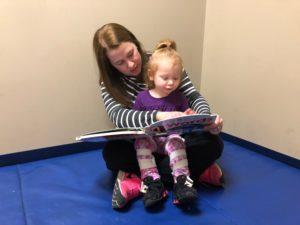
- One simple way is to build phrases using words your child already has in their vocab.: Does your child have some functional words associated with mealtime, bedtime, playtime etc.??? Try adding MORE and PLEASE to those words. For example, “more juice”, “help please”, “out please”. “more crackers”, “up please”.
- Incorporate greetings to build phrases: “Hi daddy”. “bye-bye nana”

- Model phrases throughout your daily routines, commenting on what is happening or what your child is doing, “night-night baby”, “go out”, “want up?”, “purple ball”, the more these phrases are modeled, the greater the chance your child will begin to imitate!
- Incorporate “automatic” phrases as well: For example, “I did it”, “this one”, “that one”, “my turn”, “let’s go”, “no mine”
- If you notice that your child isn’t quite catching on to 2-word phrase imitation, begin by repeating single words in a string, for example, “go-go-go!”, “up-up-up”, “night-night” to see how they respond.
If you have concerns about your child’s development, visit our webpage at https://www.abcpediatrictherapy.com for more information.
Written by: Christina Sanford, MA, CCC-SLP
Read More Skip to content
Skip to content
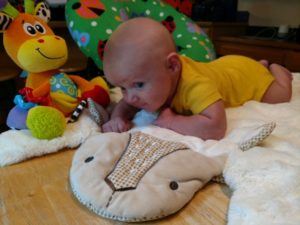
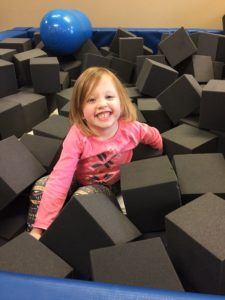
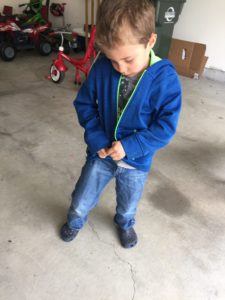
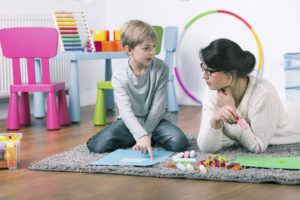

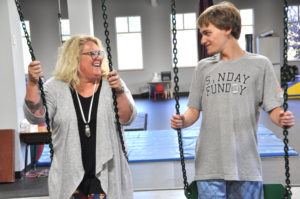
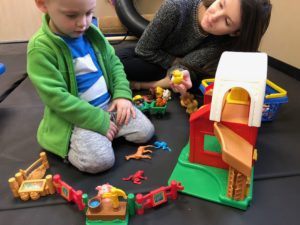
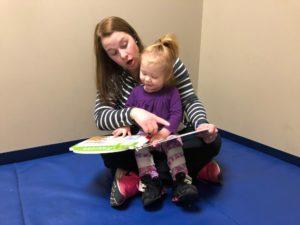

 can play the memory matching game. Place all cards face down and have your child see if they can remember where the cards are and whoever has the most matches wins the game.
can play the memory matching game. Place all cards face down and have your child see if they can remember where the cards are and whoever has the most matches wins the game.